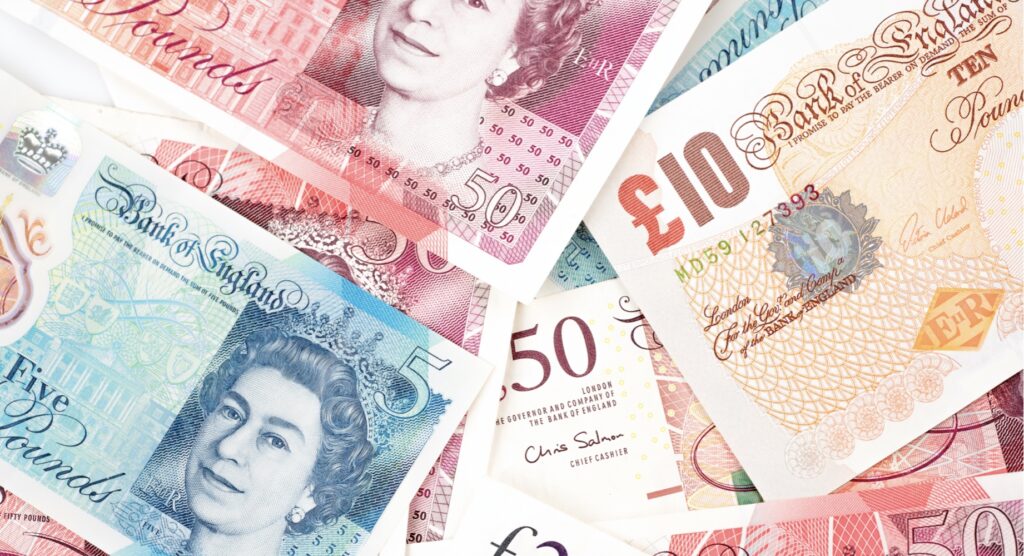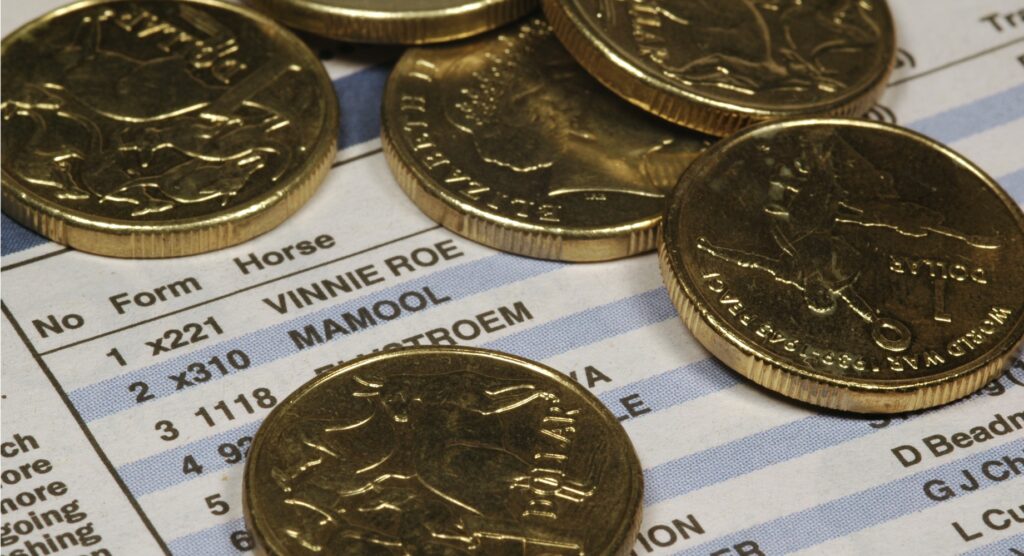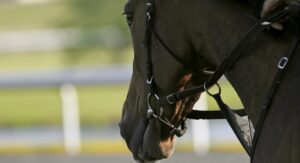When to Bet Each Way?
Each way – bet type that polarises opinion in the horse racing world. Some see it as the comfort blanket, the bank preserver. Others are not quite so positive; the bet of fools, stifling bank growth, they claim. So, just which camp is right? Is there a definitive answer as to if you should bet each way? And if so, when?
What Is Each Way Betting?
In the horse racing world, an each way bet is essentially two equal bets placed on one selection – one part placed on a horse to win and the other on the horse to place. A £10 each way bet would total £20, with £10 on the win and £10 on the place. If the horse is victorious, both parts of the bet are paid out, but if the horse finishes placed, but doesn’t win, only the place part is paid out.
The each way terms differ depending on the race type and the size of the field.
Non-Handicap Races
- 2 – 4 Runners: Win Only (1st place only)
- 5 – 7 Runners: A 1/4 the odds over 2 places (1st and 2nd place)
- 8 or more Runners: A 1/5th the odds over 3 places (1st, 2nd and 3rd place)
Handicap Races
- 2 – 4 Runners: Win Only (1st place only)
- 5 – 7 Runners: A 1/4 the odds over 2 places (1st and 2nd place)
- 8 – 11 Runners: A 1/5th the odds over 3 places (1st, 2nd and 3rd place)
- 12 – 15 Runners: A 1/4 the odds over 3 places (1st, 2nd and 3rd place)
- 16 or more Runners: A 1/4 the odds over 4 places (1st, 2nd, 3rd and 4th place)
Principles Behind Each Way Betting
The each way terms are actually very important to determining whether an each way bet is a shrewd move. The number of runners plays a significant part in determining whether betting each way is the value option.
Take for instance a 16 runner handicap, a race which pays 1/4th the odds each way for the first 4 places. These are races which favour the punter and fields that the bookmakers disdain.
Punters will often scream foul play when a 16 runner handicap mysteriously has a late withdrawal to reduce the terms from each way paying 4 places, to 3. Why is this important to the value aspect?
In a 16 runner race, all things being equal, the chance of any runner being successful is 16.00. Again, all runners have an equal chance of finishing in any position, so the chance of finishing 1st-4th is 4.00 (25%), 5-8th is 4.00 (25%) and so on. However, due to the race terms, punters are getting odds of 4.75 about what is in reality a 4.00 chance.
If we break this down to percentage chances of success:
- 3/1 = 25%
- 15/4 = 21%
The value edge for an each way bet in a 16 runner handicap, where there are 4 places paid and all runners have the same chance, is 4%. To emphasise the importance of the number of runners and terms further, let’s assume there are 15 runners and the place terms are now ¼ odds first 3 home.
The odds of each horse winning the race are now 14/1 per runner, and the chance of a horse finishing in the top 3 is now 4/1 (as the horse has an equal chance of finishing 1-3rd, 4-6th, 7-9th, 10-12th, 13-15th). With each runner now having a 14/4 chance of placing, the percentages now look like this:
- 5.00 = 20%
- 4.50 = 22.2%
Where there was a value edge of 4% in the 16 runner field, (we were getting paid out at the odds which suggested the chance of placing was 4.75 – 21%, when in fact they were 4.00 – 25%), in the 15 runner field we are giving up 2.2% in value, getting paid out at 4.50 for a bet that realistically has only a 20% chance of success.

The Each Way Bets Bookmakers Don’t Like
Bookmakers like things to be on their own terms. They like to have the odds in their favour and the vast majority of the time, they get their own way. However, there are a few circumstances in which punters have an advantage over their adversaries, and each way betting can provide that rare opportunity.
Dirty/snide/thieving each way bets can be found in races were there is generally a strong favourite (usually odds on), and a second and maybe third favourite with only small chance of upsetting the market leaders but a very good chance of filling the places. The rest of the field are usually big prices i.e. 15.00 bar.
Bookies hate these races. Why?
Because they cannot set different odds for the win terms and the place terms. They have to set one price and then the place odds are determined by the each way terms for that race. This can create some excellent value in the place market.
Let’s take for example a 9 runner race, which looks like this:
- Horse A – 1.67
- Horse B – 5.00
- Horse C – 10.00
- 26.00 Bar
Horse A is clearly a strong favourite, but it is Horse B we are interested in. This runner offers plenty of value on the place side of things. But why?
Well in a 9 runner field, where the odds are 1/5th first 3, we would receive 1.80 for the place.
However, when looking on a betting exchange where those offering odds ARE able to provide separate prices for the win and place parts of the bet, Horse B would typically be available in the place market at around 1.45 and in the win market at around 6.00 to 6.50. The difference in the win part of the bet is almost immaterial as there is such HUGE value on the place part of the bet:
- Odds on offer = 1.80 (55.6%)
- Actual odds = 1.45 (69.0%)
The place part of the bet has a 69% chance of success, but is being paid out as if it only had a 55.6% of winning. But why is this so? Because of the uncompetitive nature of the race.
If the favourite were not running, Horse B would be around an 2.38 shot (42.1%) to win. Therefore by adding up the chance of upsetting the favourite, coming second and finishing 3rd, the chance of finishing in the top 3 for each way purposes, is much greater than the 1.80 odds we are getting.

Compounding the Value
Multiples are generally a bet type to stick well clear of, as the bookmakers make big profits as soon as one selection fails to win. The Lucky 15 is an exception to that rule, especially when there are some dirty each way bets in the mix.
One of the benefits of this bet is that most bookmakers will offer concessions such as treble the odds for one winner.
The value from snide each way bets can be compounded into the Lucky 15 to bring regular profits. Without delving into the mechanics too much, take for instance the fourfold part of the bet where we have four horses that offer the same value as Horse B in the previous example – all available at 5.00 and 1.80 the place, but with the true odds on the place side of the bet being far more lucrative.
- Place odds on each runner: 1.80
- Odds received: 1.8 x 1.8 x 1.8 x 1.8 = 10.5 = 9.5% chance
- True odds: 1.45 x 1.45 x 1.45 x 1.45 = 4.42 = 22.6% chance
The fourfold part of the bet is paid out at odds of , when in fact the true odds of it being successful are . In this bet, there is 13.1% (22.6-9.5) value, which is massive. Factor in that there is a chance one of the selections may win (if not more) and that runner will be paid out at treble the odds, and the bet suddenly looks even more appealing.
Final Thoughts
Those that smugly state as if it were a fact that each way betting is for mugs, clearly have a lot to learn themselves. Granted, there are certain conditions and scenarios where it is foolish to strike an each way bet (7 runner field, two places paid etc.), but there are regularly scenarios where as a punter, the odds are in your favour.
Every situation is different and should be treated on its own merits, but shying away from each way betting when you join new betting sites could be costing you regular profits.




